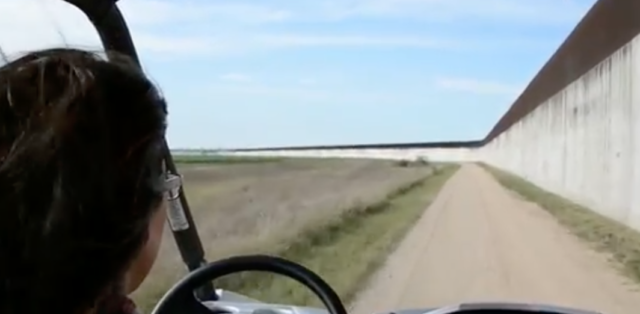During his campaign, U.S. President Donald Trump vowed repeatedly to build a wall along the border with Mexico. Last month, the U.S. Congress approved funds to install new fencing.
The new construction is forcing American communities along the border to consider the effect a wall would have.
CGTN’s Alasdair Baverstock has the details.
The Rio Grande has been part of the U.S.-Mexico border since 1848. Running the length of southern Texas, the current border wall was built on its northern banks. But wide gaps exist in the structure to allow property owners access to their land. Holes that are also used by drug and human traffickers.
Elise Peterson, who runs Texas Border Tours, said the wall’s defects were a growing concern to her and the local community. “I know in our areas there are a lot of drug-related crossings, because right now, as you guys saw when we were going through, there’s a lot of openings, and obviously from here to the wall right now, there’s about a half-mile stretch of land that you can walk on,” explained Peterson.
She is one of many in the Rio Grande Valley affected by illegal immigration and who support U.S. President Donald Trump’s insistence on construction of a bigger, better border wall.
Chris Cabrera, a border patrol union leader in the area, believes that a properly planned wall would also be a great help to his agency. “I think different areas call for different means. All areas need something, so when you have people come up they’re forced to go either east or west. We won’t have car chases through people’s communities any more, as it pushes them into areas where it’s safer to conduct business,” said Cabrera.
But despite President Trump’s push for a complete border wall, only $1.6 billion had been approved by Congress to fund it, and that money is primarily designated to renovate existing sections. It’s a small fraction of the $25 billion the White House has sought. While Mexico stood firm against demands to foot the bill.
And not everyone supports it. Erasmo Rosales lives 50 meters from the Rio Grande in Fronton, Texas. While he said that illegal crossings are a daily occurrence, he’s against building a bigger wall. “Oh yes, I see them come in hordes, ten, fifteen at a time sometimes. But I don’t see them as a threat. I think the majority of them are people who want a better opportunity, a better chance in life for their children and for themselves. This is a country that was built on immigration,” said Rosales.
As President Trump’s new wall prototypes were displayed about three thousand kilometers away on the border in California, Americans at its eastern end eyed them with suspicion. Notwithstanding the Rio Grande itself, the logistical and legal issues raised by its construction have led many Texans to say they’ll believe it when they see it.
 CGTN America
CGTN America

